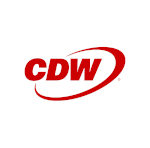Alaska Schools Gets Ahead of Environmental Learning Obstacles
Even before the pandemic, leaders at Alaska’s Matanuska-Susitna Borough School District recognized the critical impact that technology and remote learning could have for its students and their academic outcomes.
MSBSD has 47 schools spread across 25,000 square miles, an area larger than Scotland. A variety of circumstances cause disruptions for the district’s 19,000 students. Chief among them is harsh weather, which commonly prevents students from making the long trek to school, says Justin Ainsworth, associate superintendent of instruction.
Many students and their families also regularly hunt and travel together, which results in routine school absences. Meanwhile, in some parts of the district, Wi-Fi and high-speed internet access is unreliable.
RELATED: Check out these best practices to overcome one-to-one device hurdles.
“Part of our thought process was, ‘How do we leverage technology so that when these students aren’t in school, there isn’t just a learning stoppage?’” Ainsworth says.
Determined to bridge the technological gap for these students, MSBSD began building its own one-to-one program in 2015. As a result, when the pandemic first shuttered school buildings and classrooms in March 2020, the district found itself well ahead of the curve.
“One of our strategic goals is to make sure that learning can happen anytime, anywhere,” Ainsworth says. “To make that happen, we had to leverage a variety of technologies.”
Today, every student in the district receives a Chromebook loaded with a range of educational software and platforms, including GoGuardian Beacon and Gaggle for student safety, along with Google Workspace for Education and the Canvas learning management system. The district provides students who lack Wi-Fi access with reduced-cost internet or hotspots.
Whole School Collaboration Supports One-to-One Success
Ensuring the success of a school’s one-to-one program requires across-the-board collaboration at the district level and with the whole school community.
“None of this work really matters if it doesn't have a positive impact on student outcomes,” says Ainsworth. “Student achievement and access have to be front and center.”
At the district and the school level, it’s also critical to make sure that your faculty and staff possess the digital literacy needed to use these device investments effectively.
“One of the biggest challenges is helping people understand the potential of the technology and integrating it into the daily workflow in a way that generates a significant return,” says Claudia Newman-Martin, a managing director and partner with the Boston Consulting Group, which frequently works with K–12 school districts.
The Cleveland district, which relies on Google and Microsoft, employs coaches who travel from school to school, helping users troubleshoot problems and learn to make effective use of the technologies at their disposal.
EXPLORE: Learn how small IT teams can scale with people, technology, processes and partners.
“We have a focus on digital literacy, device care and educating our students, families and staff on how to best manage and care for these devices,” Greene explains. “We also help families get internet access from one of our partners or by providing a hotspot.”
Before the pandemic, Greene says about half of Cleveland’s schools had one-to-one programs, and each were managed at the individual school level.
“Now we look at it from an enterprise level,” Greene says. “The IT department takes ownership of that one-to-one program. We’re getting the devices enrolled into mobile device management and ensuring adherence to rules and policies that might have been harder to address on an individual school basis.”
Such rules might include enforcing guidelines around banned versus allowed websites, permitted downloads and uploads, or security updates and patches.
“We have applications that teachers and principals can use to ensure that classroom students are focused on learning and not just surfing the internet,” Greene says. “We also have a robust set of cybersecurity applications that monitor for threats and risks.”












